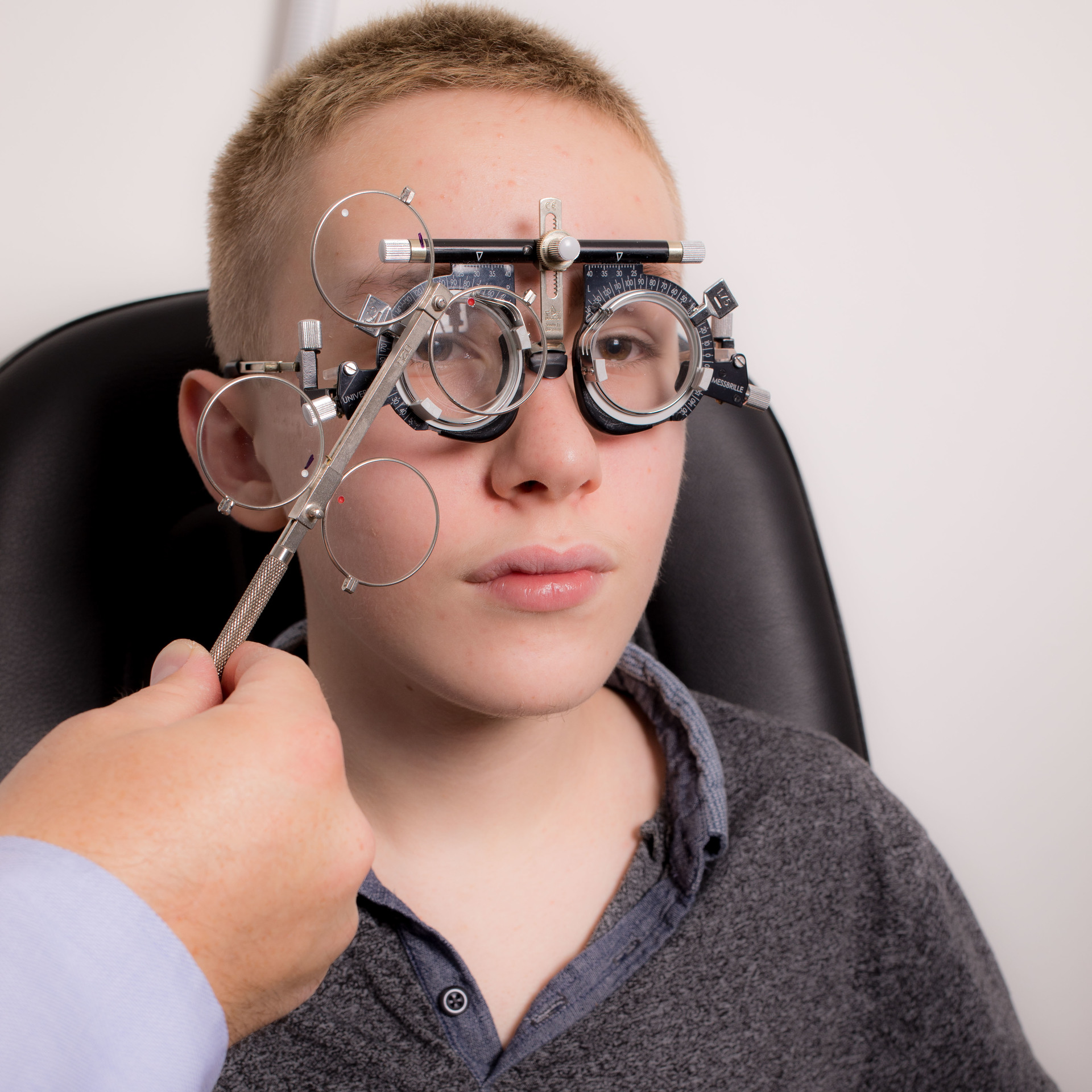
Myopia rates (short-sightedness) are increasing globally at an alarming rate. The incidence of myopia worldwide is projected to reach 50% by 2050 unless some intervention is possible. 1
But why is reducing the incidence and severity of myopia so important?
Myopia management is so important because if, by intervening in a youngster with myopia, we can slow down myopia progression, there is a significantly reduced risk of myopia-related eye disease later in life. For those interested in the stats, research has shown that an increase in myopia of 1 dioptre increases the risk of future eye-related disease by up to 58%. 2
Today we wanted to share some of the available management options and a bit about the research behind them.
Spectacle correction.
Studies in the past were done to determine if bifocal/varifocal glasses would help reduce the rate of progression of myopia in children, but these were found to have limited benefit. A two-year study conducted in Hong Kong in 2020 showed that a specialised glasses lens helped reduce the rate of progression of myopia, measured both by a reduction of prescription change and eye growth, by up to 59% compared to Single Vision (SV) lenses. This technology is called Defocus Incorporated Multiple Segments (DIMS) and is used in the MiYOSMART glasses which have been available at the practice since the summer of last year. A more recent update, published in July of this year in The British Journal of Ophthalmology 3, reported the third-year results,
“Myopia control effect was sustained in the third year in children who had used the DIMS spectacles in the previous two years and was also shown in the children switching from SV to DIMS lenses.”
We have found children have taken to these very well and to the untrained eye just appear as an ordinary pair of glasses.
Contact lens correction.
Several studies have shown that soft contact lenses with a specific multifocal design (lenses with a distance prescription in the centre of the lens and a less myopic prescription in the periphery) can slow the rate of progression of myopia. More recently, soft contact lenses have been developed specifically for myopia management. There are several available, but the one with the most research behind it is a lens called MiSight, which is a daily disposable lens. The ongoing study, which was initially a three-year trial, has shown similar results to the MiYOSMART glasses in terms of results. Another contact lens management is available is called orthokeratology. This involves a hard contact lens being worn overnight to temporarily change the shape of the eye. Ortho-K has been used for many years as a means of temporary reduction in prescription but more recently has been utilised as a management of myopia. The reduction in myopic progression shown with contact lenses is also around 50%.
Management with eye drops.
There are currently ongoing studies into using an eye drug called atropine to manage myopia. It seems to be an effective approach but it is not licenced in the UK for myopia management, at least as yet.
When thinking about what myopia management approach is best for a child, we allow plenty of time to consider the individual situation. A conversation between patient, parent and optometrist is vital to ensure we choose the right management approach. We find that children having a good understanding helps with compliance and helps give the best outcome.
References and further information:
1 Global Presence of Myopia and High Myopia and Temporal Trends from 2000 through 2050. Ophthalmology May 2016 Brian Holden et al. https://pubmed.ncbi.nlm.nih.gov/26875007/
2 The Risks and Benefits of Myopia Control. Mark A. Bullimore; Ophthalmology vol 128 issue 11 Nov 21 https://www.aaojournal.org/article/S0161-6420(21)00326-2/fulltext
3 https://bjo.bmj.com/content/106/8/1110
Myopia Control: Why Each Diopter Matters Optom Vis Sci June 19 https://pubmed.ncbi.nlm.nih.gov/31116165/
Myopia calculator tool where the risk of myopic progression for each individual can be calculated based on management approach: Myopia Calculator | BHVI
The Hong Kong progressive lens myopia control study: Marion Hastings Edwards 1, Roger Wing-Hong Li, Carly Siu-Yin Lam, John Kwok-Fai Lew, Bibianna Sin-Ying Yu
Lam CS, Tang WC, Lee PH, et al. Myopia control effect of defocus incorporated multiple segments (DIMS) spectacle lens in Chinese children: results of a 3-year follow-up study. British Journal of Ophthalmology Published Online First: 17 March 2021. doi: 10.1136/bjophthalmol-2020-317664
Paper title: Long-term Effect of Dual-focus Contact Lenses on Myopia Progression in Children: A 6-year Multicenter Clinical Trial
Authors: Paul Chamberlain1, Arthur Bradley 1, Baskar Arumugam 1, David Hammond 1, John McNally 1, Nicola S Logan 2, Deborah Jones 3, Cheryl Ngo 4, Sofia C Peixoto-de-Matos 5, Chris Hunt 6, Graeme Young 6




